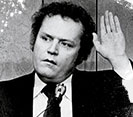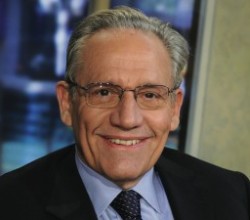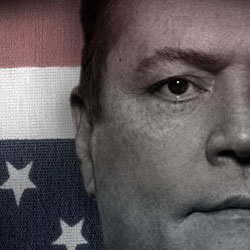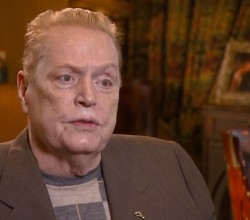From Cannabinomics
Just What the Doctor Ordered

By Christopher Glenn Fichtner, M.D.
ON JUNE 16, 2011, the 40th anniversary of President Richard Nixon’s declaration of “war on drugs,” the New York Times published an op-ed titled “Call Off the Global Drug War.” It was written by none other than former President Jimmy Carter, who cited the “courageous and profoundly important recommendations” of the recent Global Commission on Drug Policy.
These recommendations harkened back to Carter’s own message to Congress on August 2, 1977: “Penalties against possession of a drug should not be more damaging to an individual than the use of the drug itself. Nowhere is this more clear than in the laws against possession of marijuana for personal use. The National Commission on Marijuana…concluded years ago that marijuana use should be decriminalized, and I believe it is time to implement those basic recommendations.”
More than three decades and millions of marijuana arrests later, roughly one-third of the states have passed laws reflecting consumer demand for access to herbal cannabis as medicine. There has been a resurgence of interest in marijuana decriminalization, and media coverage of Mexico’s drug-war violence has exploded. At an early 2009 Presidential town hall meeting, one of the most frequently submitted online questions was whether marijuana legalization might provide a valuable stimulus for economic growth.
I suggest in my book Cannabinomics: The Marijuana Policy Tipping Point that we can now observe an intersection of three policy trajectories: the growing consumer demand for herbal cannabis as medicine; the growing recognition of the drug war itself as a public health problem; and an economic crisis that places a premium on optimizing America’s management of its resources.
In 2005, the Colorado SAFER campaign organized and passed by majority vote a Denver initiative to decriminalize possession of up to an ounce of marijuana, arguing that cannabis is safer than alcohol. In November 2006, the SAFER campaign took its public health message statewide in Colorado, where it garnered 41% of the vote. That same election day, a South Dakota medical marijuana initiative mustered 48% approval, while 44% of Nevada voters weighed in favorably on an initiative to tax and regulate the herb. Nevada voters put the question of frank legalization on the ballot long before California’s Proposition 19 to tax and control cannabis came up short at 46% in 2010.
Michigan voters came on board with approval of a medical marijuana law in November 2008, while Massachusetts decriminalized possession with an impressive 65% majority. And only weeks before Proposition 19 failed, California Governor Arnold Schwarzenegger signed a bill decriminalizing possession of less than an ounce. Late in 2011, a Gallup poll found 50% nationwide support for marijuana legalization, with only 46% opposed.
While serving as state mental health director for Illinois, noting similarities and overlap between jail and public psychiatric hospital populations, I reviewed 2003 data from the Illinois Criminal Justice Information Authority. It showed more arrests statewide for marijuana possession than for all other controlled substances combined. This was not far from the national norm. At the same time, I heard testimonials of patients and advocates fighting to pass a medical marijuana law in Illinois.
Julie, a bright and articulate woman in her early 40s who had suffered with multiple scle- rosis (MS) for over 20 years, schooled me on language. She would not talk about marijuana. In the first place, Julie was not a pot smoker, and more importantly, she refused to accept the hostile projections loaded into a term popularized during the Reefer Madness era and built upon racial tensions. Julie ingested herbal cannabis in the form of three small brownies a day, finding that she could then eliminate prescription muscle relaxants that had left her bedridden with sedation, not to mention keep her use of opiate narcotic pain relievers to a minimum.
In addition, Julie had been prescribed antidepressants— MS often induces mood disturbance through its effects on the brain—but tolerated them poorly due to side effects. Cannabis improved her mood without mental impairment. Julie repeatedly testified before Illinois legislative committees and was viewed by all as a clear-headed spokesperson and patient advocate. From Julie, I learned to reframe “marijuana policy debates” as public conversations on society’s management of cannabis—which I later termed cannabinomics.
Space will not accommodate all the stories of cannabis consumers chronicled in my book, but they include: Seth, who turned to cannabis to control his epileptic seizures when prescribed medicines didn’t work and whose doctor proposed brain surgery while refusing to discuss any possible benefits of marijuana; Jason, who used cannabis to ease phantom limb pain following the amputation of a leg; Mary, whose poststroke rehabilitation included cannabis for chronic pain in an alternative treatment approach that helped her get off prescription medications with uncomfortable side effects; Stuart, who completed his master’s degree despite the obstacle of being quadriplegic from cerebral palsy and who relied upon cannabis to relieve his muscle spasticity and improve his mood; plus the AIDS, cancer and hepatitis patients who use cannabis to relieve pain or chemotherapyinduced nausea or to stimulate appetite in wasting syndromes.
The case of Garry, a Southern California medical cannabis patient, illustrates the hazards of the drug war and its economic impact—and the intersection of both with healthcare. In 2006, when county law enforcement officials opposing the state’s medical cannabis law paid Garry an early-morning visit with the help of federal agents, he jumped out of bed in response to loud knocking. As he opened his front door, he was greeted by a battering ram and a physical takedown maneuver that left him with a dislocated left shoulder, right hand fractures, blunt head trauma and a back injury that aggravated the arthritis for which he grew cannabis in his garage. Before the raid, Garry earned a high six-figure income in his family-owned business installing custom window treatments. He now collects Social Security disability. Many physicians writing medical cannabis recommendations believe that the safety and side effects profile of herbal cannabis favor its availability over the counter rather than on a strict prescription basis, but with an age restriction because it is psychoactive. The “agerestricted, over-the-counter” idea begins to break down the distinction between medicinal and personal use. As a physician and psychiatrist, I would not hold that “all use is medicinal,” but I would offer the guiding principle that “all use should be therapeutic.” Cannabis use need not be pigeonholed into either the palliative care of dying patients, on one hand, or “substance abuse” on the other.
Herbal cannabis contains an array of chemical compounds—some psychoactive, or mind-altering— and others not. The best-studied of these cannabinoid compounds known to be primarily responsible for the mood-elevating or euphoric effects of marijuana (the “high”) is delta-(9)-tetrahydrocannabinol (THC), ironically available as medicine in the United States since 1985. THC is used to alleviate nausea and vomiting from chemotherapy, for stimulation of appetite in AIDS wasting and sometimes for pain relief.
Science tells us that built-in chemical receptors in the human body recognize these cannabinoid molecules. The receptors belong to a natural chemical messenger system that includes the bodily substance anandamide, which produces weak marijuanalike effects. (Ananda is the Sanskrit word for “bliss.”) With the discovery of this endocannabinoid system, numerous cannabinoid compounds other than THC are now being studied, with growing evidence of potential medicinal applications.
For example, cannabidiol (CBD) is a molecule chemically related to THC but is nonpsychoactive, meaning it won’t get you high. Emerging research suggests that CBD may be a better muscle relaxant and anticonvulsant than THC. In addition, CBD appears to have antianxiety effects (as does THC, at modest doses, for some individuals) and may even help alleviate symptoms of psychosis seen in cases of schizophrenia.
But what about reports that use of marijuana may lead to mental illness—especially schizophrenia? The best research to date on the weak statistical association between marijuana use and schizophrenia suggests that cause-and-effect may run in both directions. While research suggests that some people with schizophrenia are genetically vulnerable to adverse effects from marijuana, other research finds a subset whose cannabis use may be associated with improved cognitive functioning.
Academic contributors to the “marijuana and psychosis” research literature often cite the Yale University study that infused volunteer subjects intravenously with THC, only to find that some of them became paranoid and had perceptual disturbances. They ignore the University of Cologne study that compared CBD headto- head with an approved antipsychotic medication in patients diagnosed with schizophrenia. This German study found that CBD was equally effective in decreasing psychotic symptoms with fewer side effects.
Individuals genetically vulnerable to schizophrenia may self-medicate with cannabis early in their illness for symptom relief. The failure of psychiatric researchers to consider this possibility results in a bias toward viewing marijuana use as the cause of later mental illness.
Until recently, California was the only state that did not discriminate against persons with mental illness in its medical cannabis law, which allows physicians to recommend herbal cannabis for debilitating mental health symptoms. But in 2009, New Mexico added post-traumatic stress disorder to its list of conditions for which a physician (or nurse practitioner) could recommend cannabis as medicine. As a psychiatrist with extensive experience prescribing FDA-approved medications to target trauma-related mental health symptoms in combat veterans and others, I consider the New Mexico decision to be an important step forward in making therapeutic alternatives available to those patients.
Regulatory labeling informing consumers about THC and CBD concentrations would better serve those with mental health issues and would do more for public health generally than the current, criminalizing federal policy of strict prohibition. California’s medicinal cannabis producers are beginning to label and standardize their products—which include liquid whole herbal cannabis extracts—in terms of THC and CBD concentrations. This evolving interest in product measurement, standardization and quality control helps build the case for commercial integration or full legalization within a tax-and-regulate framework. In October 2011, the California Medical Association announced its support for policy change in this direction.
Current economic circumstances invite comparisons with the Great Depression. Weary of the bloodshed stemming from illegal booze and the public health hazards of nonregulation, the America that embraced President Franklin D. Roosevelt’s New Deal also repealed alcohol prohibition. The realities of our time prompt us to acknowledge that drug criminalization, which never really works anyway, is unaffordable. Cannabis is the low-hanging fruit of drug-policy reform; and medical marijuana is so ripe, it’s falling off the trees in front of us.
————————————————-
Christopher Glenn Fichtner, M.D., is a board-certified psychiatrist with practices in California and Illinois. His book Cannabinomics: The Marijuana Policy Tipping Point (Well Mind Books, 2010) is available at Cannabinomics.com.
DISCLAIMER: The ideas expressed in this article are those of the author, are for informational and entertainment purposes only, and do not constitute medical advice of any kind.

